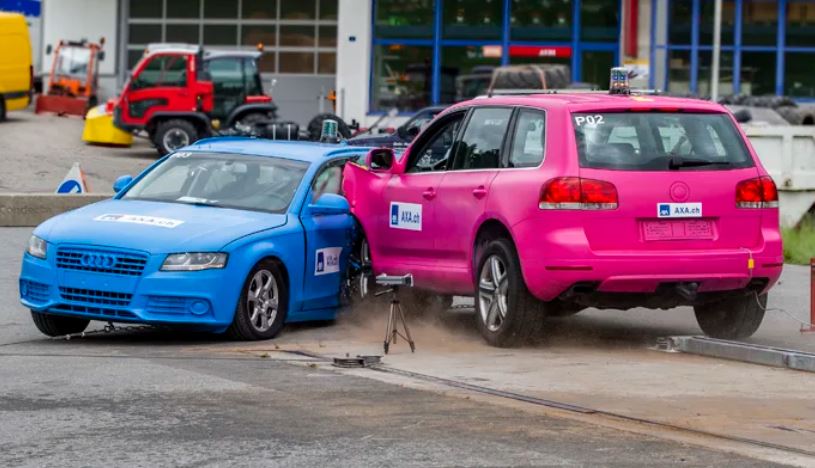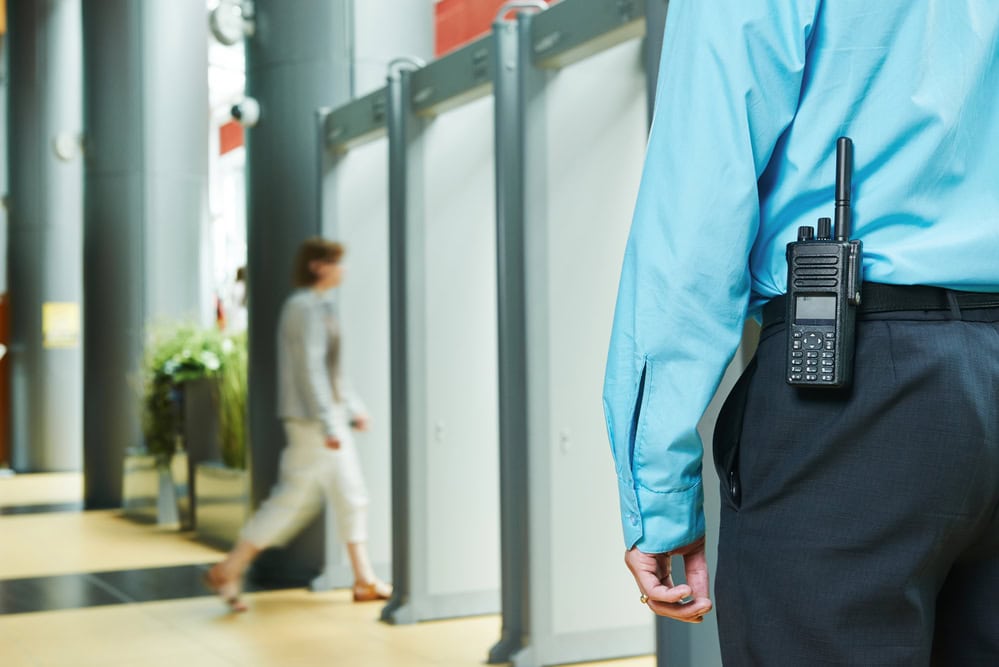The SUV is booming - and so are accidents
A good 43 percent of all new cars sold in Switzerland are urban SUVs. The large and heavy SUVs cause up to a quarter more accidents than normal cars - often with serious consequences. This is shown by this year's crash tests conducted by accident researchers.

Sport utility vehicles, or SUVs for short, have enjoyed unbridled popularity for years: in the past ten years, the proportion of SUVs insured with Axa has more than doubled. In the meantime, one fifth of all cars in the portfolio of the motor vehicle insurer in Switzerland already belong to this category.
The bigger the SUV, the greater the risk of accident
However, owners of SUVs are not only convinced of the benefits of their vehicles, but also of their own abilities: 90 percent of the SUV drivers surveyed rate themselves as safe road users. Regardless of this, however, other road users have an uneasy feeling about SUV safety: "Almost 50% of non-SUV owners believe that SUVs are dangerous for other road users. A third of non-SUV owners also say they feel more unsafe when an SUV is driving behind them," says Bettina Zahnd, head of Axa Switzerland's accident research and prevention department, about the study.
This perception is confirmed by the claims statistics of the insurer Switzerland: "In fact, SUVs caused just under 10 percent more liability claims than other passenger cars in 2019," explains Zahnd. For large SUVs - those weighing between 2155 and 3500 kilograms - the difference is even greater: in 2019, these caused 27 percent more liability claims than other cars. "The larger and heavier an SUV, the more frequently it causes a collision," the accident researcher specifies with a view to the claims statistics of Axa Switzerland.
A similar picture emerges in the case of personal injuries: the larger an SUV, the more frequently it causes personal injury, although these figures require a closer look: "While in the age category of 40 to 80-year-olds - the most frequent target group for SUVs - more accidents with personal injury are caused by large SUVs, this statement is no longer true as soon as the group of 18 to 39-year-olds is included in the statistics. This is due to the fact that younger drivers cause significantly more accidents, but statistically drive an SUV less often," explains the accident researcher.
Small inattention leads to big damage
SUVs thus cause accidents more frequently than other vehicles - often with serious consequences for other road users. "This is particularly related to the size and weight of the vehicles, as well as the height of the center of gravity and the bumper," Zahnd says. "In conventional passenger cars, the bumper is almost always at the same height, so in the event of an accident they can have their full effect accordingly. In a collision between a normal car and an off-road vehicle, this is only the case for two-thirds," the accident researcher said. An average passenger car is therefore less well protected than an SUV, even though it differs only slightly from an SUV in terms of size and weight. This is shown by the first crash of the accident researchers, in which an SUV overlooks a passenger car coming from the right. As a result, the SUV crashes into the side of the passenger car at around 60 km/h. The station wagon is significantly damaged. The station wagon is significantly damaged, in particular its rear door is severely dented by the impact. The child in the back seat is hit with full force. Although he is protected by the child seat, his head and the left side of his body hit the seat shell hard. The driver of the station wagon collides with the driver's door, although the side airbag may prevent worse head injuries. The driver of the SUV is only slightly injured at most.
E-scooter versus SUV - or: David versus Goliath
On Swiss roads, there are not only more and more SUVs and cars in general, but also an increasing number of novel means of transport, such as e-scooters. The mostly young, urban riders of these light motorcycles - this category includes most e-scooters - appreciate the spontaneity and fast locomotion. However, unlike heavy off-road vehicles, they are easy to overlook and have significantly poorer protection. For example, the Axa study shows that only 9 percent of e-scooter users always wear protective gear such as a helmet.
Most do not know traffic rules
Not only the lack of protective equipment, but also the lack of knowledge of traffic rules can become a problem for drivers of e-scooters. The same traffic rules apply to e-scooters as to bicycles, but many e-scooter drivers are unaware of this. According to the study, just half of the drivers inform themselves about the applicable traffic rules before their first ride. "In addition, the roads and especially the bicycle infrastructure that e-scooter drivers have to use are not optimized for the novel means of transportation," Zahnd said. At the same time, many users probably overestimate their own ability: Only just 16 percent of all e-scooter riders surveyed feel unsafe because of their own riding style. More than half of all e-scooter users, on the other hand, see the danger in external influences. Specifically, almost three quarters of respondents say they feel endangered by cars. In reality, however, it turns out that the majority of these accidents are self-inflicted.
Collision causes serious injuries to e-scooter driver
Even though e-scooter drivers often cause self-inflicted accidents, the risk of a collision should not be underestimated. "Due to the often uneven ground and small wheels, e-scooter drivers are often unable to give a hand signal when they want to turn," Zahnd said. The consequences of a collision can be severe, as evidenced by the second crash in which an e-scooter collided with an SUV: The driver of the e-scooter wants to turn, but the SUV driver recognizes this too late and hits the small road user from behind. Already in this impact, the e-scooter driver is expected to suffer injuries in the area of the legs and hips, and he must also expect significant injuries as a result of the second impact with the ground. "A helmet could have prevented worse head injuries, but like our dummy, almost four-fifths of the e-scooter users surveyed never wear protective gear, as our survey shows," Zahnd points out. For the driver of the SUV, the collision goes off without a hitch.
Danger also for children on the bike
Whereas e-scooters have only recently become part of the street scene, bicycles are well-known means of transport that are also popular with children. Parents see large road users in particular as a danger for their children, as the survey shows: After trucks, larger cars such as SUVs are ranked second among the most dangerous road users for children. Specifically, 69 percent of respondents rated SUVs as dangerous or very dangerous for children.
New traffic rule likely to exacerbate the problem
The danger for children is likely to become even greater in the future: From January 1, 2021, the new traffic rule will apply, according to which children up to 12 years of age may ride their bicycles on the sidewalk. "If children on bicycles use the pedestrian paths, it can be assumed that in the future they will more often ride abruptly from the sidewalk onto the pedestrian crossing and be recognized too late by drivers," assumes Zahnd. This scenario was simulated in the third crash test: A child suddenly rides his bicycle from the sidewalk across the pedestrian crossing. The driver of the SUV misjudges the situation and is unable to brake in time, resulting in a collision. The child is hit by the high front of the vehicle in the area of the upper body and immediately thrown away with great force. Significant injuries must be expected in both this first and the second impact with the ground. A properly fitting helmet of the correct size and with a good fit will prevent more serious head injuries. No injuries are to be expected in the case of the SUV driver.
Dangerous mix of disparate road users
The three crashes show: In collisions, the drivers of the off-road vehicles in their large, tall and heavy vehicles are hardly injured, while the smaller, poorly protected road users in particular can expect injuries, some of them massive. The dangerous mix of different road users requires adapted behavior from all road users: "Precisely because such a large car conveys a feeling of safety thanks to its size and weight, it is important that drivers correctly assess the risk they pose themselves and remain alert on the road," says Zahnd. "Smaller and weaker road users should always wear protective equipment and be aware of the applicable traffic rules. The latter is especially true with new types of transportation."
Source: Axa Accident Research
Tips from the accident researchers
SUV drivers should pay attention to driving assistance systems when buying. They can prevent an accident or reduce the consequences of an accident thanks to braking before a collision.
E-scooter riders should urgently wear protective equipment, at least a helmet.
Before the first ride, e-scooter drivers should inform themselves about the applicable traffic rules and regulations.
E-scooter riders should familiarize themselves thoroughly with the vehicle before taking their first ride and be especially careful on uneven road surfaces.
More crash tests from previous years can be found here:
Drones, e-bikes and sharing concepts









